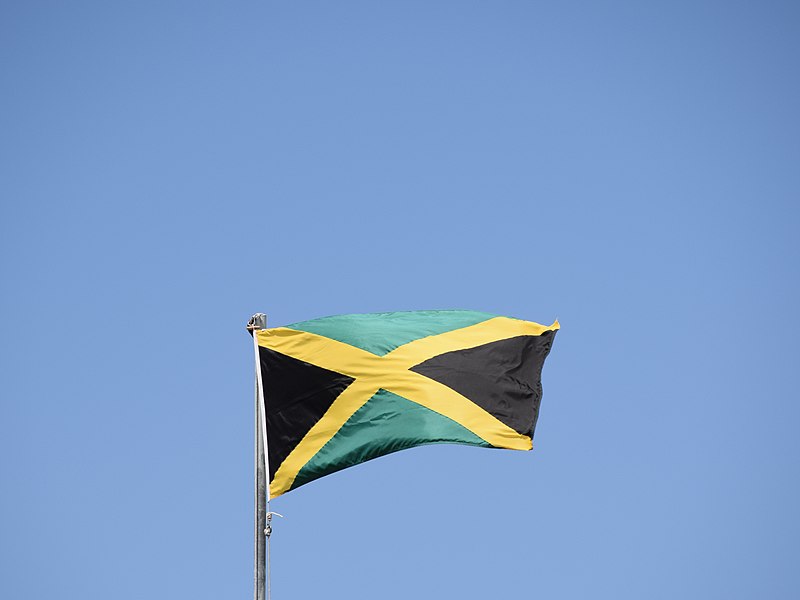Jamaica, classified as an upper-middle income economy, is a small country in the Caribbean Sea. The high debt rate and heavy reliance on imported goods such as clothing and gas have been a stumbling block to the country’s growth for over 30 years. However, the situation has begun to change for the better.
Become an insider. Subscribe to our newsletter for more top trending stories like this!
According to recent statistics, Jamaica had a poverty rate of 16.7% back in 2021. This has forced the country to rely mainly on services, which account for over 70% of its GDP. However, the country boasts a favorable climate and many natural resources, making it suitable for tourism and agriculture.
Jamaica’s Economic Growth chart. Source, Focus Economic
This article lists the 5 main income sources of Jamaica’s economy.
Join our Spotcovery Global Black Community Facebook Group for early access to exclusive content and to share in a lively discussion.
Agriculture
Video on Farming in Jamaica. Video Credit: Shan ZenZen Jamaican Vibez
Agriculture is an essential contributor to Jamaica’s economy despite the production levels being affected by the occasional extreme weather, such as hurricanes. Recent statistics reveal that agricultural production accounted for 8.34% of Jamaica’s GDP in 2021. This employed over a quarter of the country’s population.
Sugar is Jamaica‘s most dominant agricultural export despite its production dropping from 290,000 tons in 1978 to 175,000 tons in 2000.
Plantains and bananas are popular foods and fruits enjoyed by more than 90% of Jamaicans.
Another top agricultural product is coffee. It’s mainly grown around the Blue Mountains and several hilly areas in Jamaica. The Jamaican Blue Mountain coffee is ranked among the best worldwide since the cold climate makes the berries take longer to ripen, with the beans developing more substances that, when roasted, give coffee its flavor.
Cocoa is also very popular in Jamaica as it is grown throughout the country.
People Also Read: Water Sports: 5 Best Caribbean Islands for Surfing
Tourism
A Video on Dunn River Falls. Video Credit: Attraction 360
Statistics reveal the tourism industry earns Jamaica’s economy over 50% of the total foreign exchange earnings and offers over one-fourth of Jobs to Jamaica locals. Most tourism activities are centered on the northern coast and the communities of Port Antonio, Ocho Rios, and Montego Bay.
The majority of tourist attraction sites in Jamaica are landmarks. In addition, people also enjoy surfing in these areas. The young people in this country are enjoying the game.
Ocho Rios is among the most popular beaches in Jamaica. Situated on the north coast of Jamaica, Ocho Rios, which used to be a fishing village, is today attracting tourists every year. The culture and food available at Ocho Rios have played a significant role in making it popular.
Dunn’s River Falls is another top tourist attraction, with millions of tourists annually visiting the area. Dunn’s River Falls is 600 feet long and runs into the sea. There are several restaurants, hotels, and street vendors available.
Negril is a popular beach town. It boasts several factors that make it have a memorable nightlife that any tourist will wish to experience.
People Also Read: 11 Unique Things to Do in Jamaica
Become an insider. Subscribe to our newsletter for more top trending stories like this!
Mining
A Video on Bauxite Mining in Jamaica. Video Credit: InJamaica
Jamaica is considered to be among the third top producers of alumina and bauxite. The country produces nearly 12.6 million tons of bauxite, accounting for 10.4% worldwide. The 3.46 million tons of alumina it produces is 7.4% of worldwide production.
According to research statistics, mining and quarrying comprised 4.1% of Jamaica’s gross domestic production. Mining is the second leading source of income for Jamaica’s economy after tourism. Recent research approximates Jamaica to have over 2 billion tonnes of bauxite, expected to last 100 years.
Jamaica also boasts millions of tons of gypsum deposits, especially in the South of the Blue Mountains. Its estimated Jamaica produced close to 33,441 tons of gypsum in 2000. Some of the produced gypsum was used in the local cement industry, while some is used to manufacture building materials.
Limestone, marble, iron, copper, zinc, lead, and silica are other popular minerals in Jamaica.
Get to know more about mining in Jamaica from different books on Amazon.
Manufacturing
Video on Jamaica’s Manufacturing Sector. Video Credit: jamproCorp TV
The Manufacturing sector is among the top income earners in the Jamaican economy. It accounted for 20.93% of GDP back in 2021. The key sectors in the manufacturing arena include;
- cement
- metal
- light industries
- agro-processing
- rum
- chemical products
- paper
The garment industry is among the top employers, as thousands of Jamaicans are employed to work in different departments.
There’s also an oil refinery close to Kingston. It converts crude petroleum from Venezuela to gasoline and several other products, mostly for local use.
The construction industry is also a major source of income thanks to the new hotels and attractions being built due to tourism.
People Also Read: Jamaica’s Athletes: The Secrets Behind Their Success
Remittances
A story of Jamaicans living in New York. Video Credit: Jamaica
Like other developing countries, remittances in Jamaica are an essential revenue source and foreign exchange earnings. The country has become highly dependent on remittances, which are 15.5% of the GDP. However, remittance is quite vulnerable to fluctuations in economic performance.
Remittances have stimulated economic activity in different ways. They offer recipients a disposable income that can be spent on services and goods. The rise in consumer spending increases demand, leading to an increase in job creation and production.
Remittances also serve as a source of capital for small businesses in Jamaica. Locals use remittances to start or expand their enterprises, which helps jamaica’s economy to grow. Some common small businesses include retail shops, agricultural ventures, and service-oriented enterprises.
Like any other country, Jamaica’s economy experiences diverse challenges. Foreign remittances, manufacturing, tourism, agriculture, and mining are the main sources of income for Jamaica.
People Also Read: Basketball in Jamaica: Top 5 Players in the NBA
Become an insider. Subscribe to our newsletter for more top trending stories like this!
Nearly 80% of consumers visit directories with reviews to find a local business. List your business for free in our exclusive Spotcovery Black-Owned Business Directory.
Spotcovery offers unique and fresh daily content on Black culture, lifestyle, and experiences. We talk about everything black, black people, black-owned and black-owned businesses. We also deliver authentic and relevant content that will inform, inspire, and empower you! The future of black media is critical to today’s black experience! Our primary audience includes African Americans, Africans, Afro-Caribbeans, and people of African heritage. Black culture is for the culture!





